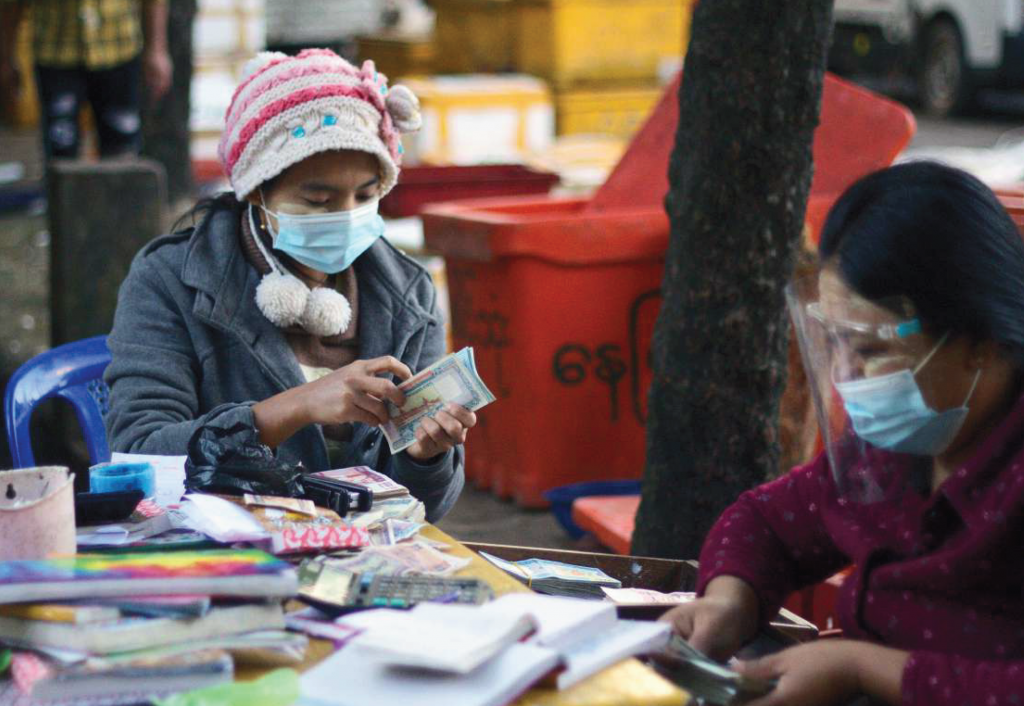Myanmar People's Pulse Survey
Socio-economic impacts of the events since 1st February 2021 on households. Published on 05 October 2021
The People’s Pulse 2021 is a survey of 1,200 respondents interviewed during May and June 2021, by telephone. It is the first household survey with national coverage in Myanmar since the military takeover on 1 February 2021. The survey is representative of the Union, all States combined, all Regions combined and urban and rural areas. The response rate was 47.1 percent. Over half of the interviews were conducted with women (54.3 percent compared to 45.7 percent of men). Interviewers asked to talk to the person in the household who was most knowledgeable about the household finances2. In all questions the respondent was asked about the situation of the household and the respondent acted as a proxy for the whole household. The work builds on other existing surveys, such as the World Bank High Frequency Surveys and the Central Statistical Organisation/UNDP Household Vulnerability Survey 2020 - both meant to assess the impact COVID-19 restrictions were having on households in Myanmar.
The COVID-19 pandemic has increased hardship around the world, and worsened poverty levels in many countries, including Myanmar. The compounding impact of the events since 1 February has further exacerbated these trends in Myanmar, which have been measured by various macro-level indicators, including expected impacts on economic growth in the months to come. However, missing from this picture of hardship is an understanding of how these enormous challenges are experienced by people in their daily lives. The People’s Pulse survey uncovers the direct impacts and coping mechanisms for the people of Myanmar. Building on previous surveys undertaken in recent years, the People’s Pulse survey looks at the lived social and economic impacts of COVID-19 and the coup not just for measures of income poverty but also vulnerability more generally. It helps to uncover how the double crisis is impacting Myanmar’s people at the family and even individual level, and in the survey report you can “hear” the voices of the respondents and understand how their lives have changed.
Key findings
- Nearly three quarters of households in Myanmar have reported a drop in income since 1 February 2021. Almost one in ten respondents reported that their household currently did not have any money coming in from any sources.
- The last ten months show, unfortunately, a clear rising trend of households eating less food. Over a tenth of rural households have eaten food that they had stored to consume later.
- The main action taken to cope with falling income has been to reduce the consumption of non-food items (68.1 percent). Two-fifths (38.7 percent) of respondents who had relied on savings since 1 February said that they have no more savings left. This was significantly higher in urban areas (46.9 percent) than rural areas (34.3 percent).
- Of those who had sold assets to make ends meet, 68 percent have sold gold or jewellery, a third of rural households have sold livestock and 27 percent of urban households have sold a motorbike.
Myanmar People's Pulse Survey Report
Socio-economic impacts of the events since 1st February 2021 on households


